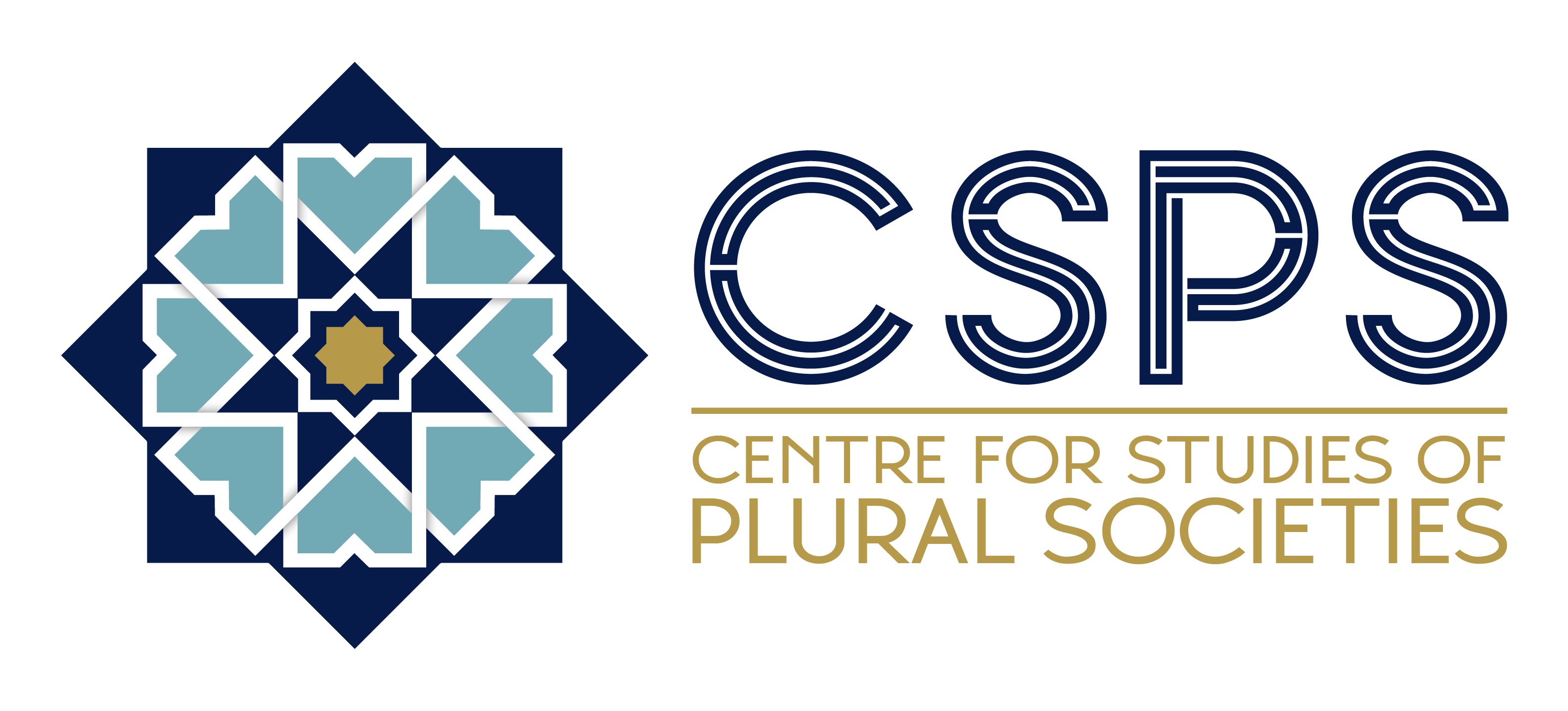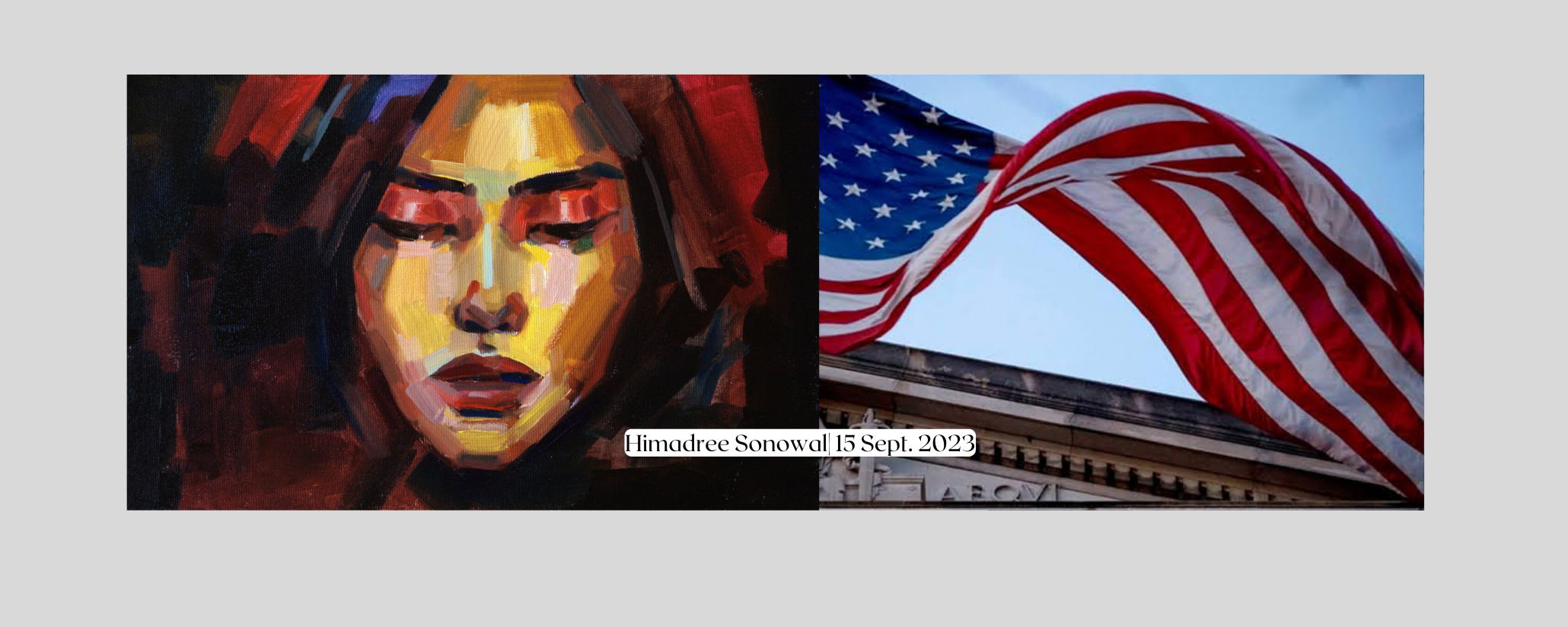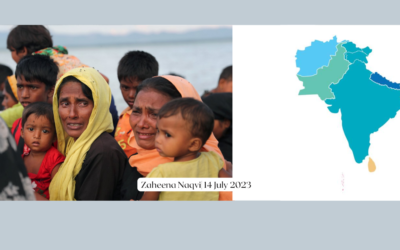Asian American women are frequently the targets of racialised discrimination and sexualisation in Western communities, which label them as the “other” and objectify them. Asian American women continue to be subordinated due to this sexualisation and objectification, which reinforces existing power dynamics and violence towards Asian American women. A lot of these were due to the Western military dominance in the post-war era and the portal of Asian American characters both in Hollywood and other entertainment industries. This hyper-sexualised image creates stereotypes and bondage and limits their role and choices in work. Hypers-sexualisation is embedded in the American history of imperialism through rape and war, resulting in laws that excluded Chinese immigrants, targeted Japanese in America, and enabled underpaid jobs for Filipinos. This essay will focus on raising awareness of such stereotypes and the role of US imperialism in race and gender inequality.
Introduction
The recent tragic incident of the Atlanta Spa shooting, which specifically targeted Asian American women, has elicited widespread shock and grief in America. This event illustrates a broader underlying issue within American society, wherein Asian American women are subjected to racism and sexual objectification. The hate towards Asian Americans is not only a result of the current epidemic or the labelling of the coronavirus as the “China virus.” Instead, it can be traced back to the legacy of US imperialism and its military actions in Asia and the Pacific, the country’s immigration policies, media representation, and which, as a result, has resulted in hyper-sexualisation and subjugation of Asian American women (Tso, 2021).
Given the heterogeneity of Asian Americans, there exists a diverse distribution of Asian Americans across many industries, resulting in distinct experiences encountered by workers within this demographic. In the context of the corporate sector, Asian Americans are often perceived as individuals who excel in executing tasks rather than assuming leadership roles.
In January 2023, the Bureau of Justice Statistics of the US Department of Justice released the Survey of Sexual Victimization, 2016-2018. This survey analyses the demographic features of victims of sexual assault, specifically focusing on racial and ethnic categories such as White, Black, Hispanic, and others within the context of crimes committed. The department is a major federal agency responsible for the measurement of crime, criminal activity, victimisation, criminal offenders, and victims of crimes, which operates at the federal, tribal, and local levels but does not categorise Asians as a category to measure sexual violence or crimes committed on Asian American women (Bureau of Justice Statistics, 2023). This poses challenges in accurately quantifying verified sexual assault experienced by Asian American women and an attitude that Asian American women face less violence than other ethnic groups. Asian American women have long faced racism, sexism, discrimination, and patriarchy. However, the perpetuation of the model minority myth serves as a deterrent to acknowledging the obstacles encountered by Asian Americans. The model minority myth, which assumes that all Asians are hardworking and have achieved success, is used politically to create competition and hatred among other racial minorities (Askin, 2022). Given the heterogeneity of Asian Americans, there exists a diverse distribution of Asian Americans across many industries, resulting in distinct experiences encountered by workers within this demographic. In the context of the corporate sector, Asian Americans are often perceived as individuals who excel in executing tasks rather than assuming leadership roles. According to a McKinsey Women in the Workplace survey, a comprehensive analysis was conducted on 400 prominent organisations in the United States. The findings revealed that Asian Americans account for nine per cent of senior vice presidents inside these organisations. However, their representation in promotions to C-suite positions is significantly lower, with only five per cent of Asian Americans being promoted to such roles. Consequently, Asian Americans make up less than one per cent of the total number of promotions to C-suite positions. They also receive less workplace support than their white counterparts (Chuiet. Et al., 2022). Research has found that the high educational background of Asian Americans has opened the doors for them to enter the professional field, but it has not resulted in promotional representation in leadership roles, thus not letting them reach their full potential professionally (Lai and Babcock, 2012).
Historical Implications of Imperialism on Asian Women
Throughout history, women have frequently been the targets of war, armed conflict, or military occupation. The downfall of a government is commonly associated with the occurrence of widespread violence against women, including acts of murder and rape. Similar to nationalist nations throughout, the matter of gender and justice has historically been given limited attention, particularly concerning women from less privileged parts of the world. In his seminal book Orientalism, Edward Said examined the interplay between Orientalism and sexism, positing that women are subjected to objectification and exploitation through the lens of male fantasies. Said further argues that the violation of a nation’s women via acts such as rape symbolically signifies the conquest and subjugation of that nation (Said, 1978).
During World War II, Japanese imperialism employed the exploitation of Asian women through human trafficking and sexual slavery, commonly referred to as comfort women. Comfort stations were established in several regions, including Shanghai, Korea, Philippines, Indonesia, Hong Kong, Macau, French Indochina, and several other locations. Women from Japan, Korea, China, etc., were forcibly taken and then coerced into serving as sexual slaves for the military under the direction of the Japanese imperialist regime. The female bodies were subjected to acts of violence, including physical assault, sexual abuse, and theft, under the governance of the imperialist regime.
It is important to note that the system of sexual slavery orchestrated by the Japanese imperial government between 1932 and 1945 extended beyond East Asian nations (Milner, Kim, and Shin, 2019). Following the war’s conclusion, American troops adopted similar practices to those initially established by the Japanese, utilising the comfort women stations. US imperialism and militarism in Asia and its continuing military presence in Asia through its involvement in the Korean War, Vietnam War and the Philippines and bases in South Korea, Japan, etc., resulted in the sexual exploitation of Asian women by the US military (Vo and Sciahitano, 2000). Chinese and Japanese Women were also forced into prostitution in Mainland and Hawaii to serve the US capitalist’s ventures. It reveals the global commodification of women’s bodies to serve imperialism, capitalism, and militarism. Specifically, the establishment of Rest and Recreation policies has resulted in the commodification of indigenous women’s bodies, which have become the object of white men’s sexual needs and frustrations. The enduring perception that Asian women’s bodies are of lesser importance and can be objectified persists, even today, in American society. Asian American women are more susceptible to experiencing both sexual and racial harassment than their white counterparts due to the historical legacy of sexual imperialism, a burden that white women have not had to endure.
The traditional feminist movement in Western societies has failed to address the concerns specific to Asian American women. Asian American women have a dual challenge of navigating a society predominantly controlled by white males and encountering a distinct manifestation of racism that is not fully comprehended by white feminists (Kumagai, 1978). Bell Hooks presents a critique of the feminist movement led by white feminists, arguing that it fails to incorporate the viewpoints of individuals who are on the periphery, encompassing both men and women (Hooks, 1984). Similarly, there has been a certain level of acknowledgement of Asian American women and women of colour by specific factions of white feminism. However, this recognition has not resulted in a fundamental shift towards inclusivity within the structural framework, nor have deliberate endeavours been undertaken by white feminists to integrate women of colour and Asian American women into the central spheres of feminist movements.
Racial US Immigration Practices and its Implications
Sunny Wan’s essay on ‘White sexual imperialism’ explores the correlation between sexual abuse targeting Asian American women and the historical influence of Western imperialism in Asia. Legal restrictions are implemented to exploit individuals of Asian descent as a source of inexpensive labour and workforce within the United States. During the 1850s, Chinese women were among the first wave of immigrants to the United States, followed by Japanese, Filipino, and Korean women in the twentieth century. Later, Asian women were restricted from coming to the US through the Page Act of 1875. They perceived all Asian Women as prostitutes who could pollute the Anglo-Saxon blood.
Asian American women today are also seen as dragon ladies or China dolls (irrespective of ethnicity) to refer to them as hypers sexual, feminine, hyper-feminine, and so on. These women were often subjected to societal perceptions that categorised them primarily as prostitutes, labourers, or only as the wives of others.
After a few decades, the Wall Bride Act of 1945 and the Non-Quota Immigrants Act of 1946 allowed Asian women who married American soldiers to come to the US. This reflects the attitude towards Asian women that was demonised in the first instance, whereas they can be used to comfort US military personnel (Woan, 2008; Yeh, 2021). Asian American women today are also seen as dragon ladies or China dolls (irrespective of ethnicity) to refer to them as hypers sexual, feminine, hyper-feminine, and so on. These women were often subjected to societal perceptions that categorised them primarily as prostitutes, labourers, or only as the wives of others. On the domestic front, they were seen as good housewives. These social expectations reinforce Asian American women to live by the stereotypical expectations of a good wife, daughter etc. (Ho, 1990). The issue of intersectional discrimination experienced by Asian American women is not a recent one. A qualitative study was conducted to examine the phenomenon of intersectional prejudice and its impact on markers of psychological well-being. The findings of the research indicate that Asian American women encounter many manifestations of intersectional discrimination at multiple levels, encompassing internalised, interpersonal, institutional, and structural dimensions. Research has also been conducted on the coping strategies employed by individuals, revealing that women tend to utilise avoidance, cognitive shifting, and reliance on social support networks (Forbes, Yang and Lim, 2023).
Nevertheless, the available data was deficient in quantitative measures encompassing variables such as ethnicity, religion, socioeconomic status, and immigrant status. Research has indicated that Asian American women exhibit a correlation with heightened levels of psychological stress, sadness, anxiety, alcohol-related issues, and suicidal inclinations. (Forbes, Yang and Lim, 2023). Even the teachings of Asian American histories in college and university campuses reflected gendered exclusions where the struggle and life of Asian men were only included in the curriculum. The reformulation of the curriculum to extend around histories of men and include Asian American women are taken. The University of Berkeley, California, was the first University in the 1970s to offer courses on Asian American women. It is important to construct a new politics of representation of Asian Americans, breaking the hegemonic fantasies and imaginaries as exotic and hyper-sexualised and the inherent sexist, classic, racist, and sexualised notions. These stereotypes impact not only the social, political, and economic dimensions but also the psychic (Vo and Marian, 2000).
Role of Media and Popular Culture
The Portrayal of Asian Americans in media and popular culture shows discernible differences in how Asin bodies manifest sexual characteristics, either in excessive or deficient quantities. The portrayal of Asian women’s physical forms, particularly in visual mediums like film, often exhibits a hyper-sexualised depiction that underscores their vulnerability to white masculinity and portrays them as either devoid of sexual agency or primarily associated with militaristic endeavours. Asian American women have historically been typecast into several stereotypical roles, including China Doll, Geisha Girl, and Dragon Lady. The portrayal of women’s bodies in films significantly shapes the orientalist perception of Asian American women as excessively sexualised, perpetuating white racism in society (Yamamoto, 2000).
The media has influenced in shaping the portrayal and perception of Asian Americans. During the aforementioned historical period, Asian women were often portrayed in popular literature as objects of sexual desire, which resulted in narratives that seemed to deprive white individuals of employment opportunities, inexpensive commodities, and vectors of diseases, among other unfavourable depictions. These enduring stereotypes against Asian Americans, specifically Asian women, have continued to persist.
In 2016, some filmmakers and actors utilised the social media platform Twitter, with the hashtag #Oscarssowhite, to express their concerns regarding the lack of diversity in the nominees for the Academy Awards, which predominantly featured only white people. The issue at hand encompasses not just the lack of representation of minority women of colour in the industry’s nomination pool but also the nature of the assigned roles. For instance, Asian Americans are consistently relegated to background roles or stereotypical portrayals of corporate professionals, who tend to prioritise their professional lives above their personal ones (Zhang, 2010). Another element to consider is the phenomenon of white actors portraying Asian American characters, sometimes referred to as “whitewashing.” This practice has been observed in several instances, such as Emma Stone’s portrayal of Allison Ng in Aloha and Scarlett Johansson’s portrayal in Ghost in the Shell (Rose, 2017).
Conclusion
Despite the existence of Federal laws that prohibit discrimination based on national origin, race, colour, religion, disability, sex, and familial status, the current perilous circumstances faced by Asian American women have been influenced by instances of government-sponsored discrimination, military involvement in prostitution, and the perpetuation of one-dimensional stereotypes through Hollywood’s portrayals. Furthermore, the Covid-19 pandemic has added another dimension of ‘contagious body’ to the prevailing animosity. Due to the distinct nature of the discrimination and hyper-sexualisation experienced by Asian American women, it is evident that a singular solution cannot effectively address this issue. However, it is imperative to do ongoing studies to formulate comprehensive solutions that prioritise the specific requirements of Asian American women.
Himadree Sonowal is Doctoral Training Intern at CSPS
References
Askin Genevieve. “The Fetishization of Asian American Women: Where We Are and Where to Go.” Educational Specialist, 2022.
Association for Asian Studies. “Teaching about the Comfort Women during World War II and the Use of Personal Stories of the Victims – Association for Asian Studies,” June 19, 2023. https://www.asianstudies.org/publications/eaa/archives/teaching-about-the-comfort-women-during-world-war-ii-and-the-use-of-personal-stories-of-the-victims/
Forbes Nicola, Yang Lauren C, and Lim Sahnah. “Intersectional Discrimination and Its Impact on Asian American Women’s Mental Health: A Mixed-Methods Scoping Review.” Frontiers in Public Health 1 (2023).
Ho Chi Kwan. “Gender-Role Perceptions: An Intergenerational Study on Asian-American Women.” NWSA Journal 2, no. 4 (1990): 679–81. https://www.jstor.org/stable/4316089.
Hooks bell. Feminist Theory: From Margin to Center. Boston: South End Press, 1984.
Kumagai, Gloria L. “The Asian Women in America.” Explorations in Ethnic Studies 1, no. 2 (July 1, 1978): 27–39. https://doi.org/10.1525/ees.1978.1.2.27.
La Lei, and Babcock Linda C. “Asian Americans and Workplace Discrimination: The Interplay between Sex of Evaluators and the Perception of Social Skills.” Journal of Organisational Behaviour 34, no. 3 (2012): 310–26.
McKinsey & Company. “Asian American Workers: Diverse Outcomes and Hidden Challenges,” September 7, 2022. https://www.mckinsey.com/featured-insights/diversity-and-inclusion/asian-american-workers-diverse-outcomes-and-hidden-challenges.
Trinh, Vo Linda, and Sciachitano Marian. “Introduction: Moving beyond ‘Exotics, Whores, and Nimble Fingers’: Asian American Women in a New Era of Globalization and Resistance.” Frontiers: A Journal of Women Studies 21, no. 1/2 (2000): 1–19. https://www.jstor.org/stable/3347027.
Trimble, Lauren. “Accessibility at JSTOR: From Box-Checking to a More Inclusive and Sustainable Future.” Learned Publishing 31, no. 1 (January 2018): 21–24. https://doi.org/10.1002/leap.1134
Tso, Tiffany Diane, and Tiffany Diane Tso. “Racism and Sexualization of Asian Women Pushes Them into Low-Wage Jobs.” Prism, April 22, 2021. https://prismreports.org/2021/04/01/racism-and-sexualization-of-asian-women-pushes-them-into-low-wage-jobs/
Rose, Steve. “Ghost in the Shell’s Whitewashing: Does Hollywood Have an Asian Problem?” the Guardian, December 3, 2018. https://www.theguardian.com/film/2017/mar/31/ghost-in-the-shells-whitewashing-does-hollywood-have-an-asian-problem.
Said Edward W. Orientalism. 1ST ed. New York: Pantheon Books, 1978.
Woan, Sunny. “White Sexual Imperialism: A Theory of Asian Feminist Jurisprudence.” Washington and Lee Journal of Civil Rights and Social Justice 12, no. 2 2008.
Yamamoto, Trace. “In/Visible Difference: Asian American Women and the Politics of Spectacle.” Race, Gender and Class 7, no. 1 (2000): 43–55.
Yeh, Anouk. “Inside The Exhibition Box: How White Sexual Imperialism Has Trapped Asian American Women.” Refinery29, May 28, 2021. https://www.refinery29.com/en-us/2021/05/10458763/asian-women-white-sexual-imperialism.
Zhang Q. “Asian Americans Beyond the Model Minority Stereotype: The Nerdy and the Left Out.” Journal of International and Intercultural Communication 3, no. 1 2010.




